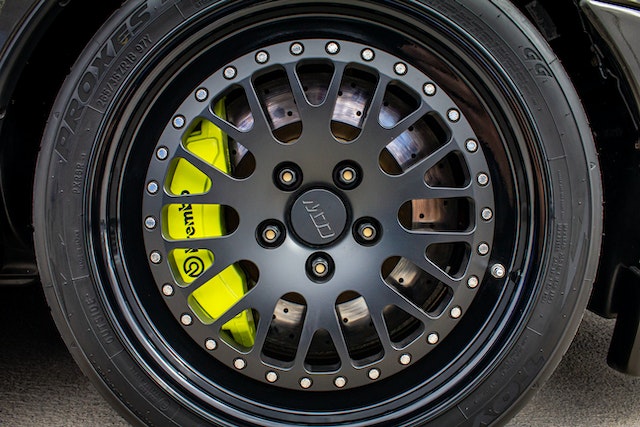
Does ABS reduce fatalities in car accidents? Anti-lock braking systems (ABS) have made cars far safer, but they haven’t reduced fatal accidents because of something called risk compensation.
Anti-lock braking systems are designed to stop the wheels of a vehicle locking up when the brakes are applied in an emergency. If the wheels on a vehicle lock up, the vehicle will skid and will be uncontrollable. It will be impossible for the driver to turn away from the accident and the vehicle may turn and slide sideways. ABS uses threshold braking, which means the brakes are applied until a skid is imminent and then released to maintain contact with the road. This is performed again and again until the vehicle comes to a stop. Before the invention of ABS, this kind of braking, called cadence braking, was taught to drivers. The driver would pump the brake pedal in order to stop without skidding.
ABS constantly analyzes each wheel’s speed. When you brake and the ABS detects that the wheel is rotating slower than the speed of the vehicle, it rapidly releases and tightens the brakes again and again to prevent the wheel locking. Modern cars can also target a single wheel, preventing the car from sliding sideways. ABS is far more effective than a driver using cadence braking. ABS can apply and release the brakes 15 times a second. Try pumping your foot up and down fifteen times a second.
The first ABS system was introduced in France by Gabriel Voisin. He added his system to the wheel of a plane. His ABS increased braking performance by 30% and reduced the number of tires that burst. ABS for cars was invented in the 1960s and in 1971 the Chrylser Imperial became the first production car with a 4-wheel computer operated ABS.
The main two advantages of ABS are that it prevents cars from skidding, and it allows drivers to turn and steer round an accident. It doesn’t really reduce stopping distances. In fact, on ice and slippery roads, it may even increase stopping distances, but it will allow you to have a controlled stop.
Another safety braking feature that many modern cars have is called electronic stability control. The ESC prevents the car from skidding. However, ABS is only activated when a driver presses down hard on the brake pedal, while the ESC is permanently activated. The ESC system constantly monitors the direction the vehicle is travelling and monitors the steering wheel to know which way the driver wants the car to be travelling in. If the car appears to be moving away from the line the driver wants to be taking, the ESC can apply braking to individual wheels to counter a skid before it even happens. ESC reacts instantly and corrects skids before the driver even knows that one is happening.
So, modern cars have ABS and ESC. Does ABS reduce fatalities in road accidents? The answer is not really, although it should. Cars are safer, but ABS hasn’t reduced road traffic deaths by a significant amount. That sounds counterintuitive, but it is explained by risk compensation.
Risk compensation basically means that people compensate for risk. They adjust their behavior in response to levels of risk. They become more careful when there is high risk and less careful when they feel the risk is low. Take rock climbing for example. If you have no harness, you are going to climb extremely carefully. If you have a harness, you can take more risks. This applies to driving. ABS can stop a car more quickly on bad road surfaces, and in bad weather, so people think they can drive faster and closer to the car in front and still be able to stop in time. Risk compensation theory means that as cars get safer, the fatality rate will stay the same. The numbers appear to back this up. Cars with ABS are 9% more likely to be involved in a fatal crash than a car without ABS. This is in part down to risk compensation, but it could also be because people still use cadence braking even with ABS. If you pump the brakes with ABS, the system won’t activate properly.
Luckily for us, though, braking decisions are being taken out of our hands. Automatic emergency braking systems are being installed on modern cars. These systems either use radar mounted in the radiator or cameras to detect potential collisions. The system will apply the brakes automatically, or it will increase brake pressure if the driver is not braking enough. Experiments have shown that it takes a human between one and two seconds to react to an obstacle and apply the brakes. An automatic emergency braking system can react and apply the brakes within milliseconds. If you are travelling at 100 km/h, a 2 second difference equates to a 54 meter difference in stopping distances. That is quite significant. And this is what I learned today.
Photo by Ivan Kazlouski: https://www.pexels.com/photo/close-up-photo-of-a-rim-12152871/
Sources
https://en.wikipedia.org/wiki/Electronic_stability_control
https://crashstats.nhtsa.dot.gov/Api/Public/ViewPublication/811182
https://www.icbc.com/partners/driver-training/Documents/ts274w.pdf
https://www.motortrend.com/features/automatic-emergency-braking/
